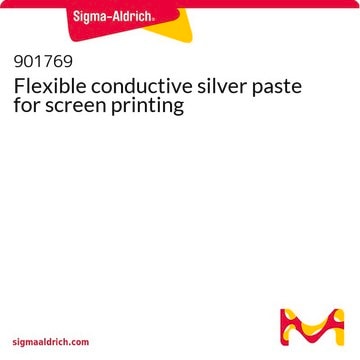200689
Éthyl cellulose
viscosity 10 cP, 5 % in toluene/ethanol 80:20(lit.), extent of labeling: 48% ethoxyl
Synonyme(s) :
ethylcellulose
About This Item
Produits recommandés
Forme
powder
Température d'inflammation spontanée
698 °F
Ampleur du marquage
48% ethoxyl
Indice de réfraction
n20/D 1.47 (lit.)
Viscosité
10 cP, 5 % in toluene/ethanol 80:20(lit.)
Température de transition
softening point 155 °C
Densité
1.14 g/mL at 25 °C (lit.)
Chaîne SMILES
O1[C@H](C(C(C(C1COCC)OCC)OCC)OCC)O[C@@H]2C(OC(C(C2OCC)OCC)OCC)COCC
Clé InChI
MINRZDZESGXKDM-OLIDUAMRSA-N
Vous recherchez des produits similaires ? Visite Guide de comparaison des produits
Description générale
Application
It can be used to prepare graphene-based ink for inkjet printing. This graphene oxide ink printed onto ITO surfaces can be used as an electrode for label-free DNA sensing.
Owing to its unique features such as gastroresistance, biocompatibility, and degradation to non-toxic and readily excreted products, EC is widely used in oral and topical drug dosage forms for the controlled release of the drug.
Caractéristiques et avantages
- Non-toxic
- Stable
- Compressible
Code de la classe de stockage
11 - Combustible Solids
Classe de danger pour l'eau (WGK)
WGK 1
Point d'éclair (°F)
Not applicable
Point d'éclair (°C)
Not applicable
Équipement de protection individuelle
Eyeshields, Gloves, type N95 (US)
Faites votre choix parmi les versions les plus récentes :
Déjà en possession de ce produit ?
Retrouvez la documentation relative aux produits que vous avez récemment achetés dans la Bibliothèque de documents.
Les clients ont également consulté
Notre équipe de scientifiques dispose d'une expérience dans tous les secteurs de la recherche, notamment en sciences de la vie, science des matériaux, synthèse chimique, chromatographie, analyse et dans de nombreux autres domaines..
Contacter notre Service technique






